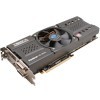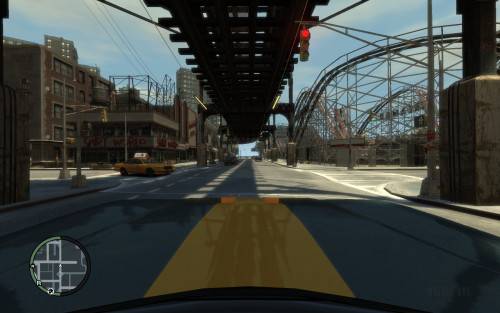- Qualcomm Launches Snapdragon 4 Gen 2 Mobile Platform
- AMD Launches Ryzen PRO 7000 Series Mobile & Desktop Platform
- Intel Launches Sleek Single-Slot Arc Pro A60 Workstation Graphics Card
- NVIDIA Announces Latest Ada Lovelace Additions: GeForce RTX 4060 Ti & RTX 4060
- Maxon Redshift With AMD Radeon GPU Rendering Support Now Available
Sapphire Radeon HD 5870 Vapor-X

It’s no secret that the Radeon HD 5870 is the fastest GPU on the planet, but what do you get when you take it, toss in a more robust cooler, quieter operation, higher clock speeds and not one, but two free games? You get the Vapor-X, from Sapphire. Despite all that it packs in above the reference version, it modestly carries just a $20 premium.
Page 7 – Grand Theft Auto: IV
If you look up the definition for “controversy”, Grand Theft Auto should be listed. If it’s not, then that should be a crime, because throughout GTA’s many titles, there’s been more of that than you can shake your fist at. At the series’ beginning, the games were rather simple, and didn’t stir up too much passion in certain opposers. But once GTA III and its successors came along, its developers enjoyed all the controversy that came their way, and why not? It helped spur incredible sales numbers.
Grand Theft Auto IV is yet another continuation in the series, though it follows no storyline from the previous titles. Liberty City, loosely based off of New York City, is absolutely huge, with much to explore. This is so much so the case, that you could literally spend hours just wandering around, ignoring the game’s missions, if you wanted to. It also happens to be incredibly stressful on today’s computer hardware, similar to Crysis.
Manual Run-through: After the first minor mission in the game, you reach an apartment. Our benchmarking run starts from within this room. From here, we run out the door, down the stairs and into an awaiting car. We then follow a specific path through the city, driving for about three minutes total.



Crysis is one of the most gluttonous games on the market today, and GTA IV doesn’t follow too far behind. The game as a whole requires a beefy system to run at all, and if you have the barebones of what it requires, then the gains seen with faster graphics hardware shrinks the higher you can go. Memory is king in this game, and it’s a prime example of benefits that 2GB cards can offer.
|
Graphics Card
|
Best Playable
|
Min FPS
|
Avg. FPS
|
|
NVIDIA GTX 295 1792MB (Reference)
|
2560×1600, H/H/VH/H/VH Detail
|
27
|
52.590
|
|
ATI HD 5870 1GB (Sapphire Vapor-X)
|
2560×1600, H/H/VH/H/VH Detail
|
25
|
47.452
|
|
ATI HD 5870 1GB (Reference)
|
2560×1600, H/H/VH/H/VH Detail
|
29
|
45.767
|
|
NVIDIA GTX 260 896MB (GBT SOC)
|
2560×1600 – High Detail
|
30
|
46.122
|
|
NVIDIA GTX 285 1GB (EVGA)
|
2560×1600 – High Detail
|
32
|
45.573
|
|
NVIDIA GTX 275 896MB (Reference)
|
2560×1600 – High Detail
|
30
|
44.703
|
|
NVIDIA GTX 260 896MB (XFX)
|
2560×1600 – High Detail
|
24
|
38.492
|
|
ATI HD 4890 1GB (Sapphire)
|
1920×1080 – High Detail
|
32
|
50.300
|
|
ATI HD 4870 1GB (Reference)
|
1920×1080 – High Detail
|
33
|
48.738
|
|
ATI HD 5770 1GB (Reference)
|
1920×1080 – High Detail
|
33
|
47.719
|
|
NVIDIA GTX 250 1GB (EVGA)
|
1920×1080 – High Detail
|
21
|
34.257
|
Once again, the HD 5870 matches the ranks of the GTX 295 as a card capable of handling detail settings above what we use in our above 2560×1600 test. We bumped up two of the detail settings to Very High, from High, and still retained great framerates.
Support our efforts! With ad revenue at an all-time low for written websites, we're relying more than ever on reader support to help us continue putting so much effort into this type of content. You can support us by becoming a Patron, or by using our Amazon shopping affiliate links listed through our articles. Thanks for your support!






